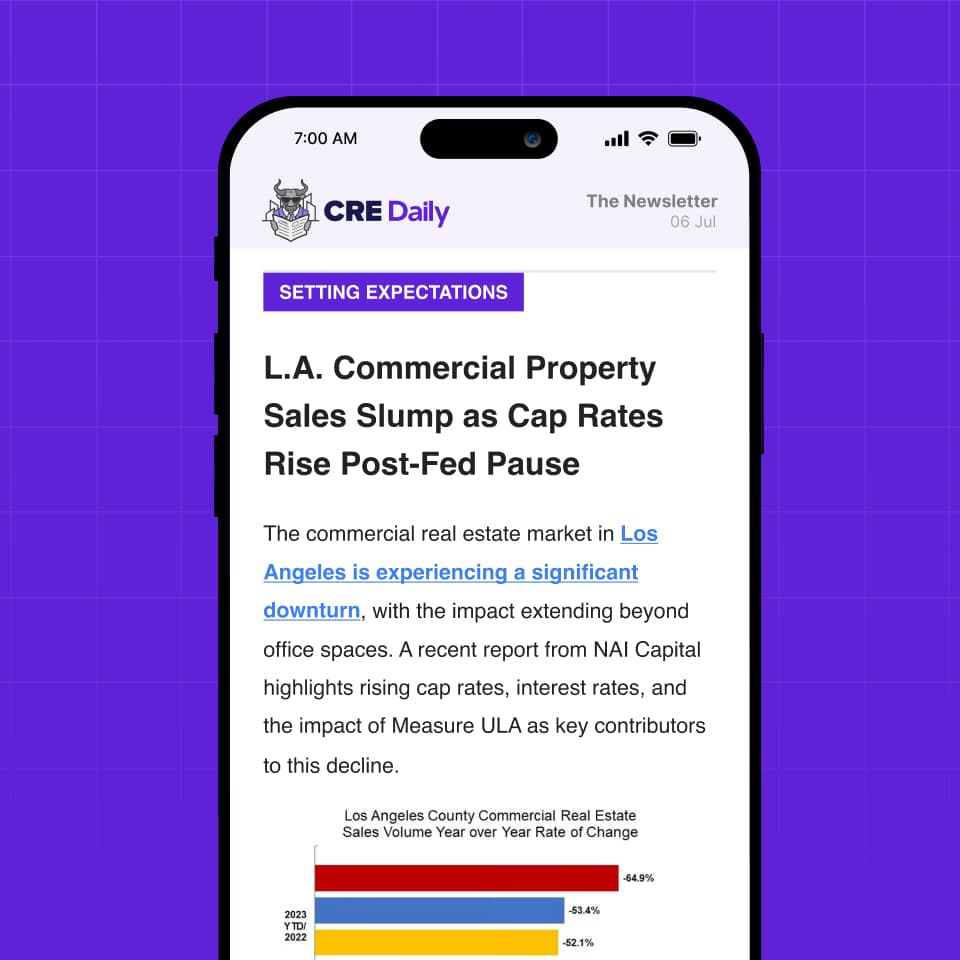- The Fear and Greed Index climbed to 56, indicating market optimism. Investor confidence is driven by the multifamily and industrial sectors, while office lags.
- 50% of investors plan to boost CRE exposure in the next 6 months, with 65% prioritizing multifamily.
- Recent Federal Reserve rate cuts cut borrowing costs, with the average CRE loan rate at 6.0%.
- 31% of CRE loans maturing in 2025 will face higher refinancing costs, particularly for office and multifamily assets.
For the first time in several quarters, the Burns + CRE Daily Fear and Greed Index crossed into expansion territory, rising to 56 in Q4 from 53 in Q3. Investors are especially bullish on multifamily and industrial properties.
Burns + CRE Daily Fear and Greed Index
Download your FREE copy of the Q424 survey findings below.
"*" indicates required fields
By downloading, you agree to our Terms and Privacy Policy. You will also start receiving CRE Dailys free newsletter. You can unsubscribe anytime.
By The Numbers
In Q4, 25% of investors increased their CRE exposure, while only 9% decreased it. Looking ahead, half of the surveyed investors plan to increase their CRE exposure in the next six months, while only 7% expect to decrease it.
Meanwhile, 43% remain in a wait-and-see mode. Multifamily is the top choice, with 65% of investors intending to allocate more capital to the sector, compared to just 19% for Office.
Easier to Access Capital
Since September, the Federal Reserve’s rate cuts lowered borrowing costs, with SOFR rates down 75 bps over the quarter. The average CRE loan rate now stands at 6.0%, though office loans remain higher at 6.6%, reflecting remote work risks.
In the last 30 days, only one-third of newly secured CRE debt was short-term, often carrying variable rates indexed to SOFR plus a spread. Over the past quarter, a 75-bp drop in SOFR eased some pressure on borrowers.
The majority (63%) of new CRE debt is long-term, typically fixed-rate, and tied to 10-year Treasury yields plus a spread. Despite recent rate cuts, 10-year yields remain high due to policy and fiscal risk.
The Looming Maturity Wall
About 31% of CRE investors face loan maturities in 2025, many of which originated between 2015 and 2020 when rates were significantly lower.
Rising borrowing costs and potential valuation drops are set to increase debt obligations, with 37% of surveyed investors planning to secure new debt, 19% looking to refinance, and 26% unsure how to handle increased debt obligations.
Asset values have fallen across most sectors, with office down 15% YoY, multifamily down 7%, industrial down 3%, and only retail up 1%. Additionally, 19% of borrowers aim to negotiate loan modifications to avoid new debt or refinancing.
Distressed Opportunities
Distressed CRE opportunities are expected to emerge in 2025 as investors navigate rising debt obligations. In fact, 13% of respondents intend to unload some assets, 18% plan to seek equity injections, and 20% will draw on cash reserves.
Private credit markets, with billions in dry powder, are poised to capitalize on these rare opportunities. Owners of high-quality, well-occupied properties may offset higher costs by passing them on to tenants via higher rents.












